



The holidays are over. If you have irritable bowel syndrome (IBS), however, that holiday infusion of good, rich food may have left your gut bloated, gurgling, gassy, stopped up, or loosened up at some point.
IBS is a complex disorder that researchers are still learning about, but they’re pretty clear that four factors play a role: hypersensitivity reactions, increased gut transit time (motility), higher than normal amounts of fermentation, and malabsorption of sugar.
Developed by Peter Gibson and Susan Shepherd at the University of Melbourne, Australia around 2000 and published in 2009, the odd-sounding FODMAPS diet addresses two of these factors: fermentation and sugar malabsorption.
The FODMAPS diet came out of the recognition that distension of the intestinal tract – probably caused by high rates of fermentation – is a source of pain in people with IBS. (Interestingly, the gases usually produced by this fermentation — hydrogen, carbon dioxide, and methane — are usually odorless.)
The FODMAPS diet works by reducing consumption of foods that are likely to cause fermentation in the gut.
What are FODMAPS?
Since no one in their right mind would make up the FODMAPS acronym, it’s no surprise that it refers to something scientific:
- Fermentation – foods that cause fermentation. They include the following:
- Oligosaccharides – composed of simple sugars, including wheat, rye, barley, onions, shallots, spring onions, garlic, legumes, lentils, artichokes, and chicory.
- Disaccharides – foods containing double sugar molecules (lactose) such as milk, yogurt, and ice cream.
- Monosaccharides – foods containing single sugar molecules (fructose) such as honey, corn syrup, mango, apples, pears, and watermelon.
- Polyols – foods containing sugar alcohols — sorbitol, mannitol, maltitol, xylitol — such as stone fruits like avocados, cherries, peaches, plums, apricots, and nectarines.
Also included are high fiber foods. High amounts of fiber also tend to produce fermentation. (Note that not all oligosaccharide- or disaccharide-containing foods cause fermentation, but some do.)
Successful Diet
Five studies suggest a FODMAPS diet can be very effective in reducing the symptoms of IBS. One study suggests it may be more effective than reducing gluten intake in people with non- celiac gluten sensitivity.
A recent study found that FODMAPS do, indeed, increase gut distension by causing increased gas (fermentation) and water content. The pain present in IBS is caused at least in part by a mixture of increased distension and increased sensitization.
Beating the Bloat- By FODMAPS creator Dr. Peter Gibson
FODMAPS are foods that tend to be more poorly absorbed in the small intestine, possibly because you’re lacking the enzymes to do the job. The central sensitivity present in IBS may also cause you to experience pain when others are not experiencing any.
When the poorly-digested FODMAPS hit the colon, the bacteria have a field day and produce lots of gas. These foods also tend to draw water into the large intestine reducing gut motility, causing swelling of the intestinal walls (bloating) and pain.
Researchers recently gave people with IBS and healthy controls an undigestible substance that passed pretty much intact into their large intestines where it produced gas, pain, bloating, etc. in the IBS patients, but not the healthy controls. The kicker was that the study, the first to demonstrate structural abnormalities in the guts of people with IBS, found increased water uptake in the guts of the IBS patients.
The Diet
Low and High FODMAP Foods (from Monash University)
| Food Category | High FODMAP foods | Low FODMAP food alternatives |
| Vegetables | Asparagus, artichokes, onions(all), leek bulbs, garlic, legumes/pulses, sugar snap peas, onion and garlic salts, beetroot, Savoy cabbage, celery, sweet corn | Alfalfa, bean sprouts, green beans, bok choy, capsicum (bell peppers), carrots, chives, fresh herbs, choy sum, cucumbers, lettuce, tomatoes, zucchini. |
| Fruits | Apples, pears, mangoes, nashi pears, watermelons, nectarines, peaches, plums | Bananas, oranges, mandarins, grapes, melons |
| Milk and dairy | Cow’s milk, yogurt, soft cheese, cream, custard, ice cream | Lactose-free milk, lactose-free yogurts, hard cheeses |
| Protein sources | Legumes/pulses | Meats, fish, chicken, tofu, tempeh |
| Breads and cereal | Rye, wheat-containing breads, wheat-based cereals with dried fruit, wheat pasta | Gluten-free bread, sourdough spelt bread, rice bubbles, oats, gluten-free pasta, rice, quinoa |
| Biscuits (aka cookies in the US) and snacks | Rye crackers, wheat-based biscuits | Gluten-free biscuits, rice cakes, corn thins |
| Nuts and seeds | Cashews, pistachios | Almonds (<10 nuts), pumpkin seeds |
- Download and printout Fodmap Foods here.
The Low FODMAP IBS Diet: Ten Rules for Living With IBS
Among other suggestions, this doctor asserts that eating small meals, reducing fat intake, reducing stress, and avoiding artificial sweeteners are good additions to a FODMAPS diet.
Sample Low FODMAP meal ideas – From Monash University
| Breakfast | Gluten-free or spelt toast with vegemite, strawberry jam (sweetened with sucrose)· Cereal (oats, porridge, cornflakes*, rice bubbles*)· Tea or coffee (lactose-free milk if you have lactose malabsorption)· Serving of suitable low FODMAP fruit* add oat or rice bran for extra dietary fiber |
| Lunch | Gluten-free or spelt sandwich with fillings (ham salad, tuna salad, cheese/salad, egg/ lettuce)· Soup homemade with low FODMAP vegetables· Fresh salads with dressing (olive oil, lemon juice) and plain meat· Gluten-free pizza with low FODMAP vegetable toppings |
| Dinner | Meat/fish/tofu plus low FODMAP vegetables/salad plus potato/rice/gluten-free pasta/rice noodles |
| Snacks | One serving of suitable fruit (cantaloupe, banana, grapes, strawberries, orange)· Yogurt (lactose-free if you have lactose malabsorption)· Gluten-free biscuits and cakes |
FODMAPS apps
- Iphone FODMAPS Diet app
- Android FODMAPS Diet app
- Use the FibroMapp app to monitor your symptoms.
More Low FODMAPS Foods
Vegetables: bamboo shoots, bell peppers, bok choy, cucumbers, carrots, celery, corn, eggplant (aubergine), lettuce, leafy greens, pumpkin, potatoes, squash (butternut, winter), yams, tomatoes, zucchini (courgette)
Fruits: bananas, berries, cantaloupe, grapes, grapefruit, honeydew, kiwi, kumquat, lemon, lime, mandarin, orange, passion fruit, pineapple, rhubarb, tangerine
Protein: beef, chicken, canned tuna, eggs, egg whites, fish, lamb, pork, shellfish, turkey, cold cuts (all prepared without added FODMAP-containing foods), nuts, nut butters, seeds
Dairy and non-dairy alternatives: lactose-free dairy, small amounts of: cream cheese, half and half, hard cheeses (cheddar, colby, parmesan, swiss), mozzarella, sherbet, almond milk, rice milk, rice milk ice cream
Grains: wheat-free grains/wheat-free flours (gluten-free grains are free of wheat, barley and rye): bagels, breads, hot/cold cereals (corn flakes, cream of rice, grits, oats, etc.), crackers, noodles, pastas, quinoa, pancakes, pretzels, rice, tapioca, tortillas, waffles
Beverage options: water, coffee and tea (individuals with IBS may also want to limit caffeine), low FODMAP fruit/vegetable juices (limit to ½ cup at a time).
The FODMAPS Elimination and Reintegration Diet Plan
This diet can produce results quickly for some, but experts on different websites recommended a 2-8 week trial period. If all goes well, then you can attempt to reintroduce one FODMAP food at a time back into your diet in order to maintain as high a variety of foods as you can tolerate.
The FODMAPS diet isn’t curing IBS. If you have IBS and go back ona FODMAPS-rich diet, your gut will probably blow up again; it’s about removing foods that trigger it. Going on a low FODMAPS diet, however, should allow you to later reintroduce some higher FODMAPS food sback into your diet, perhaps in smaller amounts than you were used to.
Your gut may also be sensitive to some categories and of some FODMAPS foods and not others. Your gut may also be sensitive to foods not in the FODMAPS categories. I have problems, with bananas which are in the low FODMAPS category but do pretty well with apples which are in the high FODMAPS category. FODMAPS is a good beginning, but IBS is complex, not completely understood and surprises may be in store.
Dr. Peter Gibson (FODMAPS originator) – on the Diet and the Latest Science
Others
Fructose – Possibly A Key Dietary Factor
Recent studies suggest that high fructose foods may be particularly adept at producing gut distension and symptoms. (See a list here.) After the high-fructose sweeteners used in carbonated drinks, alcohol, and sweets, the highest natural fructose containing foods are raisins, apples, pears, honey, grapes, and blueberries. Other common high fructose-containing foods are bananas, blackberries, cherries, figs, kiwis, mandarins, mangos, rockmelons, grapefruit, pineapples and raspberries.
Fructose is also common in vegetables. Some of the higher fructose-containing vegetables include asparagus, artichokes, beans, broccoli, leeks, cabbages, onions, tomatoes, peanuts, and zucchini.
These foods should be eaten with other foods to lessen their impact.
Watch Fats and Oils
Because fats and oils slow down gut motility – already a problem with IBS – reducing fat content may be helpful.
Fiber and Constipation
Like all the disorders we deal with, IBS is a complex one. Some people with IBS may benefit from high fiber diets while others will suffer while on them. People who experience regular constipation might want to try adding 25 grams fiber daily for women and 38 grams for men, recognizing that they may experience more gas while on the higher-fiber diet.
If you’re constipated, an excellent way to relieve it without the straining that can cause hemorrhoids is: while you’re sitting on the toilet, put your hands on the outsides of your knees and then push against your hands with your knees while resisting with your hands.
The Wheat Question: Gluten or FODMAPS?
The originator of the FODMAPS diet, Dr. Peter Gibson believes that the relief that some or perhaps many people get from removing wheat from their diet is more due to reducing their FODMAPS intake than to any actual gluten sensitivity.
FODMAPS and Small Intestinal Bowel Overgrowth (SIBO)
An excellent blog in the Paleo Leap website points out that the problems caused by FodMaps and SIBO are similar and often related, but they’re not the same. People with FODMAPS-caused problems experience difficulty with absorption and bacterial overgrowth in both the small and large intestines, while SIBO refers to bacterial overgrowth in the small intestine. It’s possible to have FODMAPS issues without having SIBO, but if you have SIBO then a FODMAPS diet should help because it’s reducing bacterial overgrowth in the small intestine.
FODMAPS – Why Good Diets Sometimes Fail in IBS
The FODMAPS diet could also help explain why some people on otherwise good diets such as the Paleo and Mediterranean diets still experience gut problems.
- See an excellent blog on Paleo diets and FODMAPS
Cause Unclear, but Gut Flora May Play a Role
Why some people have more problems with FODMAPS is not clear, but altered bacterial flora is a possibility. A recent review of the gut and fibromyalgia suggested that the FODMAPS, gluten, and lactose intolerance found fibromyalgia could result from gut infections for bacterial overgrowth. A recent small study suggests that a positive response to a FODMAPS diet may be more a function of altered bacterial flora than other factors.
The Diet for You?
Kicking out some of the good nutritious foods in this diet can be hard. I did it the hard way. Before I learned of the FODMAPS diet, I slowly, painfully, recognized that onions were a major problem for me. Apples I tolerate fairly well but have to watch because of their high sugar content. I gave up dairy over ten years ago. I gave up beans about five years ago and eggs two years ago. Many of these foods (beans, eggs, onions, wheat) I was eating in high quantities and some I could probably introduce back in small amounts, but I’m still gassy and get bloated at times.
Some foods that are not high in FODMAPS, such as eggs and bananas, cause me gastrointestinal distress. Some low-FODMAPS but high glycemic foods such as potatoes cause me problems not with my gut but with my energy levels.
I seem to do best with my low FODMAPS, low glycemic, Paleo-type diet, but I’m still experimenting.


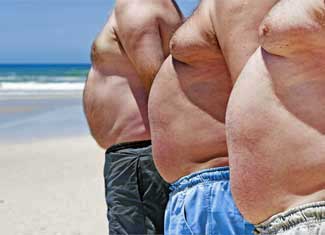
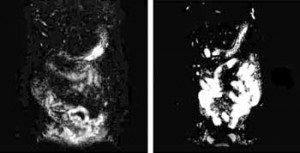
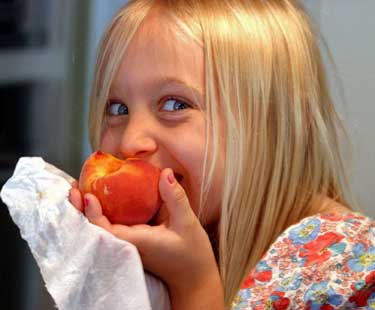
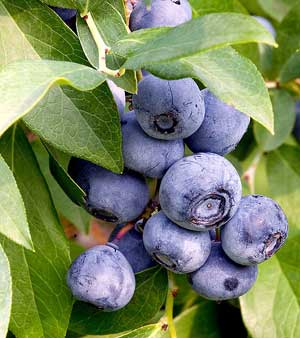

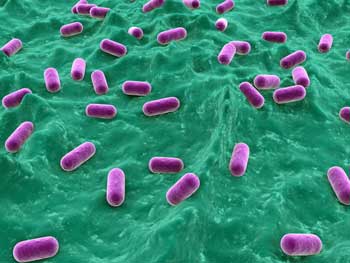




This is very helpful information. I have been eating a low FODMAPs diet for the past two years but didn’t know it had a name. It took a long time to find out what foods worked and all the foods I can eat safely are on the low Fodmaps list. I haven’t had an ibs flare since I started. I eat 5 small meals a day and I’m never hungry.
I also take a probiotic called Sisu Integris and what a difference this has made to my digestive system. I used to take probiotics with multiple strains but this just has the one strain (lactobacillus plantarum (LP299v) and it has been a miracle for me.
Thanks for a great article!
Cool! Thanks for passing that on….I’m trying to reduce the size of my meals…it’s a toughie…
I do GF diet and avoid many of these fpods. Does anyone know if extracting, e.g. Nutribullet, helps with being able to eat some of these foods? I have such a huge list of foods I am sensitive to. 🙁
Also, my worst GI symptoms started when I had h.pylori in 1998. My follow up test after treatment was negatibe, but O wonder… Anyone with big problems following supposedly successfully treated H. Pylori?
I had problems with H.Pylori since 1993, about the same time I developed Fibromyalgia. The first time I was treated with the antibiotic protocol, all my symptoms both GI and body aches disappeared. They soon came back. After many similar rounds of antibiotics, I discovered mastic gum, bismuth salts and other products that can be found separately. I took them whether I tested positive to the bacteria or not, or not. Now I take GastroMycin at the outset of GI pain and all my GI pain goes away.
During that times, I was in a study comparing diagnostic tests for h. pylori. According to the test results, blood tests for h. pylori were only 60% accurate.
The “F” stands for “fructose,” not fermentation.
I checked my sources and they had fermentation. Maybe some groups use different designations for what F means.
Re: sample do and don’t food lists –
If pumpkins seeds are okay, does that mean that pumpkin (or other squash) would also be okay?
Great information.Many people suffer from Irritable Bowel Syndrome and doesn’t have knowledge on diet required .I will definitely share this.
IMO there is not such a thing as the best diet for IBS. The best diet is individual, everyone has to find out which foods trigger symptoms one by one through elimination diet or muscle testing. For instance I’m sensitive to many of the FODMAP alternatives and I can tolerate very well some FODMAP.
Good point! One not brought out well in the blog….It’s very individual. Some people may be sensitive to some categories of FODMAPS and not others or be sensitive to some foods not in the FODMAPS designation as I am…Experimentation is the key.
Hi Cort! Just discovered your blog – thanks for the great article! Always glad to see the low FODMAPs diet gaining the attention it deserves. I thought you and your readers might like to know about my wife and I’s new company making FODMAP Friendly food. She is a dietitian who has had IBS for 20 years and the FODMAP diet helped her so much that we decided to launch this company making low FODMAP protein bars, and soon other stuff. For those interested, we can be found at: https://nicerfoods.com
once again Cort does a brilliant job of giving a clear guide to a complex issue while not minimising the sometimes complex possible links. You do such a great job Cort and encourage us all to remain open and inquiring in our attitude to new information and useful links. I have been aware of this diet for some time but this is the best and clearest introduction of it I have seen.
🙂
Thanks!
Hi Cort, Great Blog and covers a wide range of issues with Fodmap’s, you should review and consider the new worldwide certification program for foods that are Fodmap Friendly which is making it easier to buy foods that are suitable for us sufferers! see the range of foods at http://www.fodmap.com
A gluten free diet made me well for years, until excessive exercise caused a severe relapse – so I’m keen for people to experiment with dietary changes. However when travelling this is difficult so I use digestive enzymes to help. Glutenease and/or Peptizyde may help people who find the diets too restrictive.
Personally I find apples help (maybe the high vitamin C content?) as does live yoghurt (for the healthy bacteria and vitamin D). I should try milk free again as it was a great help for years with dermatitis but I really miss cheese. If I eat much fat gut motility increases very rapidly indeed!
If going milk free calcium and vitamin D suplements are likely to be needed.
Excellent blog Cort. It does become a choice for the lesser of two evils when one has several conditions. We are affected by what we eat. For those of us with constipative alternating diarrhea IBS, sifting through the right thing for our body can be an arduous chore, because it can change at the drop of a hat. I have been working at it for decades.
The one thing I can say for certain, is that unhealthy carbs and sugar are a no no for everyone. I stopped using any artificial sweeteners and saw an improvement in my muscle pain, but not much else. If I avoided all the foods suggested for my conditions, there wouldn’t be anything left to eat. I guess what I am trying to say is… the squeaky wheel is the one that gets the grease. I do hope your blog inspires others to start a diet calendar to relate symptoms.
My dad tried his hand at brewing homemade beer (though he was never a big drinker). I think of that brewing process and what happens during fermentation and I can see it at work in my gut!
Bravo to you for staying on top of this.
My IBS-C is primarily triggered by legumes- green peas, lentils, green beans, beans, peanuts, etc. I think broccoli also does it to a much smaller extent, not sure about other cruciferous vegetables. All I have to do to avoid IBS is to limit my intake of legumes by making sure that I don’t eat them several days in a row. If I do start noticing symptoms, I just eat about 4 prunes when I go to bed and the next day everything comes out all right!
Cort, After reading your blog, I’ve lost confidence in my GI specialist. I have had IBS for years and after extensive testing she ordered me to increase fiber by taking Benefiber. After reading the list of foods to be eliminated I was shocked to find wheat as a major irritant…Benefiber is wheat based. I will eliminate Benefiber and the causative foods and expect improvement. Since my “brain fog” continues to worsen I truly appreciate your always easy to understand updates.
I eat less and will do exercise
Do you think it will be enough?
Totally frustrated. Dr. Just emailed me a copy of the Fodmap diet. But I already know I’m in trouble. Don’t know how I’m going to get enough protein into me. I’m diabetic, allergic to the protein in dairy and basically a vegetarian. So if I omit the meat, fish and the legumes….where does that leave me! I can’t even eat too many eggs as they contain 10 grams of fat …and that alone sends me off….which as never upset me because other than the very very odd egg sandwich I don’t eat them! And while I tolerate hard cheese…it has to be in small amounts!
So NOW how do I get enough protein. Haven’t even found yogurt (Milk or non milk) that I tolerate!
Anyone have any suggestions…..